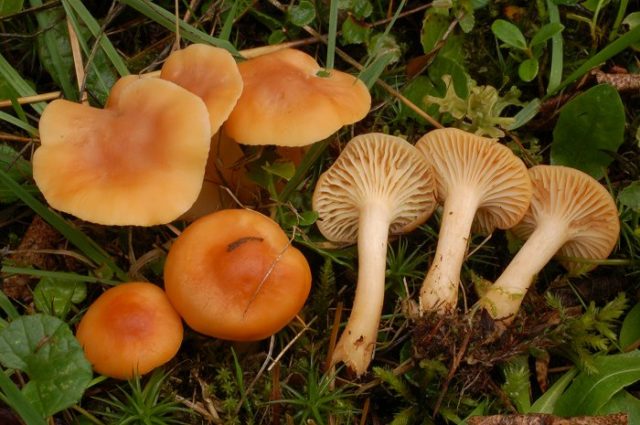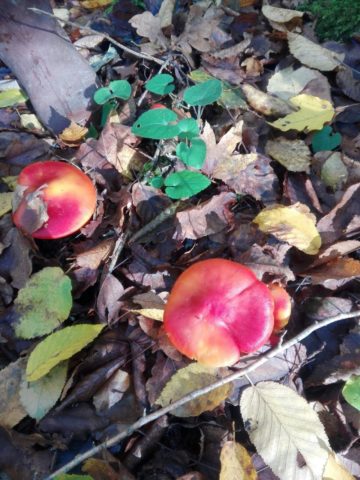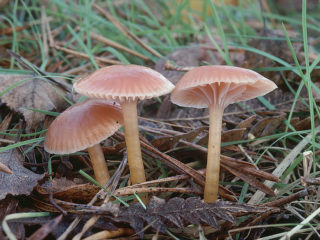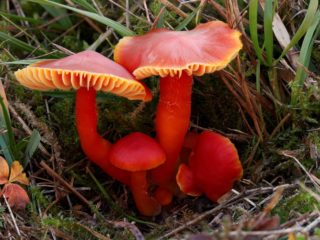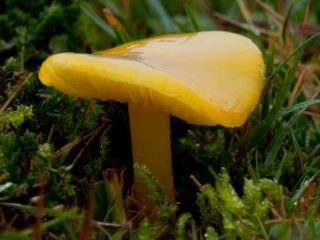Content
The Hygrocybe wax mushroom has a bright, attractive appearance, especially noticeable against the backdrop of green summer grass. Its fruiting body is distinguished by regularity and symmetry. A characteristic feature of the mushroom is its ability to change its shape under the influence of moisture.
What does Hygrocybe wax look like?
The size of the fruiting body is relatively small - the cap is up to 4 cm in diameter, the stem is up to 5 cm in length. But these are record figures. Mostly there are specimens with a cap size of no more than 1 cm, and legs about 2-3 cm.
The thickness of the leg reaches 0.4 mm. It is very fragile because it is hollow and the consistency of the pulp is loose. The leg ring is missing.
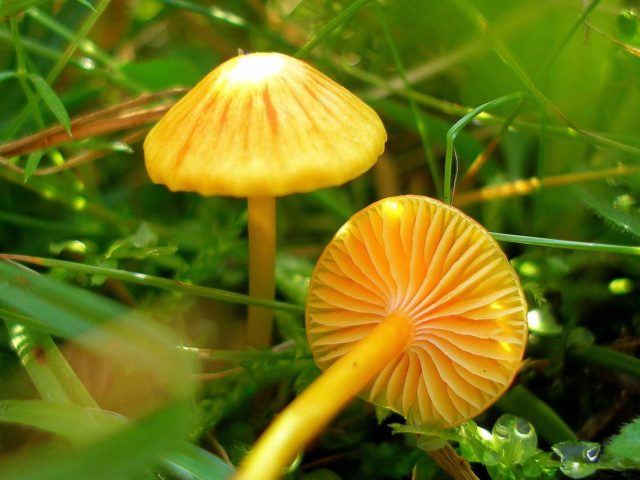
The fruit body is completely smooth, without any roughness or inclusions
The upper part of the cap is covered with a thin layer of mucus.The pulp of the fruiting body is the same color as the integument. It has virtually no taste or smell.
The color of this species is almost always yellow or yellow-orange. In some cases, a change in color is observed: the cap may fade and become lighter. The leg, on the contrary, becomes dark.
In young specimens in the active growth stage, the shape of the cap is convex. As it matures, it becomes almost flat. Adult and overripe fruiting bodies have caps in the form of a miniature bowl with a depression in the middle.
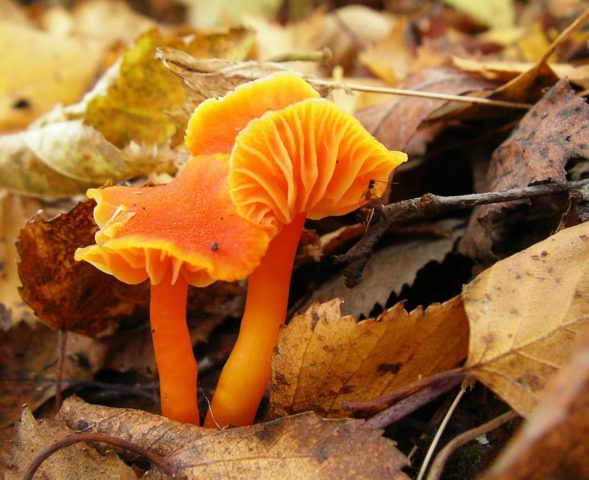
A special feature of Hygrocybe wax is its ability to accumulate moisture, which leads to swelling of the fruiting body.
The hymenophore has a lamellar structure. It is quite rare, especially for a mushroom of such a miniature size. The hymenophore plates are predominantly attached to the stalk. The spores are ovoid, smooth. Their color is white. Fruiting occurs in summer and autumn.
This species has several counterparts that are not poisonous. They differ from Hygrocybe wax in size and color. In all other respects, the varieties are very similar. For example, Girgocybe meadows has a more saturated orange color. In addition, it is always found in large groups.
Another double, Hygrocybe crimson, has a longer leg (up to 8 cm), etc.
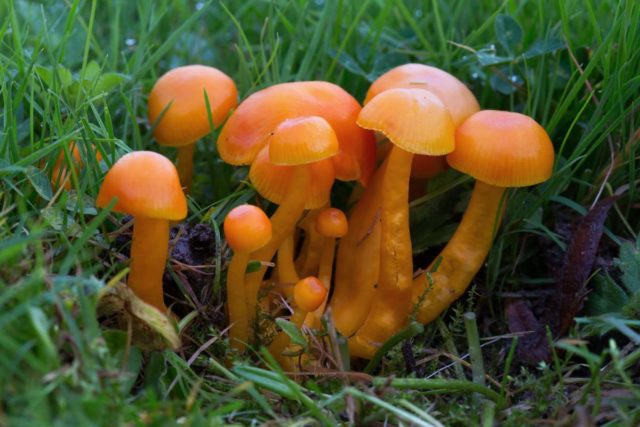
Hygrocybe has a round oak cap
Where does Hygrocybe wax grow?
In the Northern Hemisphere it grows almost everywhere in temperate and subtropical climate zones. In Asia, the mushroom is quite difficult to find, and it is not found in Australia, Africa and South America.
In nature, Hygrocybe wax can be found either singly or in large groups of up to several dozen specimens. Prefers moist soils with plenty of vegetation.In forests it is common in the shade of trees among mosses. It is also found in meadows with tall grass.
Is it possible to eat Hygrocybe waxy?
This species has been studied relatively poorly, so it is currently impossible to make judgments about its edibility or toxicity. Modern mycology classifies it as inedible. There have been no cases of fatal poisoning from consumption.
Since these species are very similar to each other, in order not to be mistaken, it is recommended to familiarize yourself with their appearance and places of growth.
Conclusion
Hygrocybe waxy is a miniature mushroom from the Hygrophoraceae family. In Europe and North America, it is distributed throughout temperate climates. It prefers to grow in deciduous forests, but can also grow in meadows with sufficient moisture and high vegetation. Classified as inedible.
